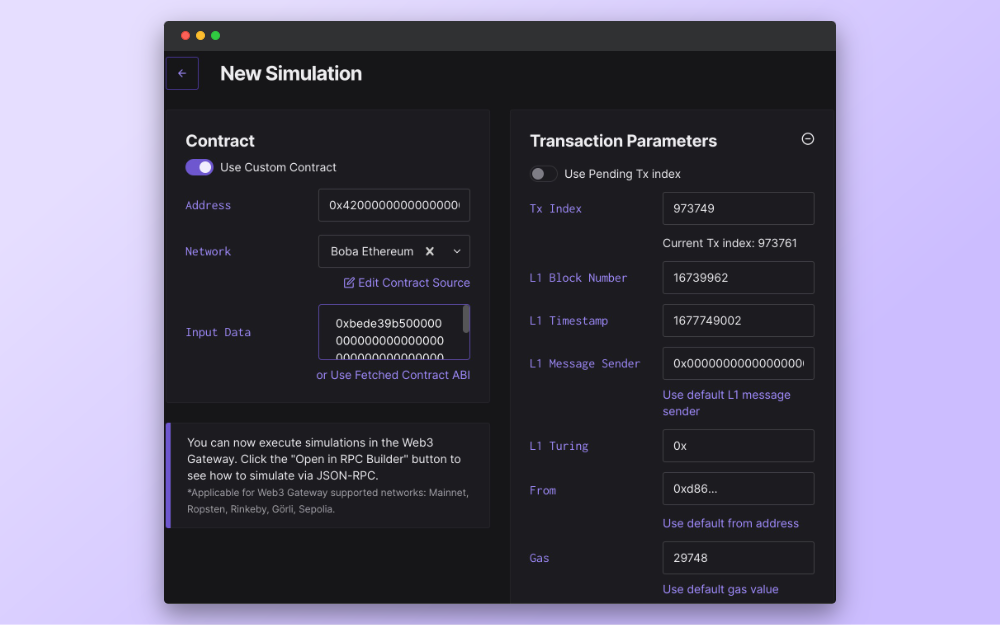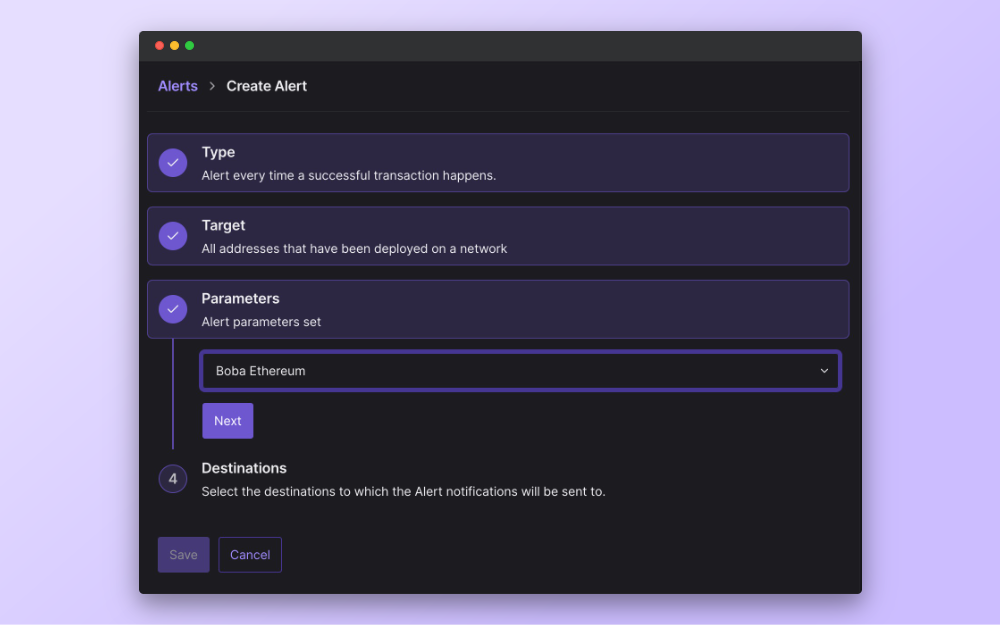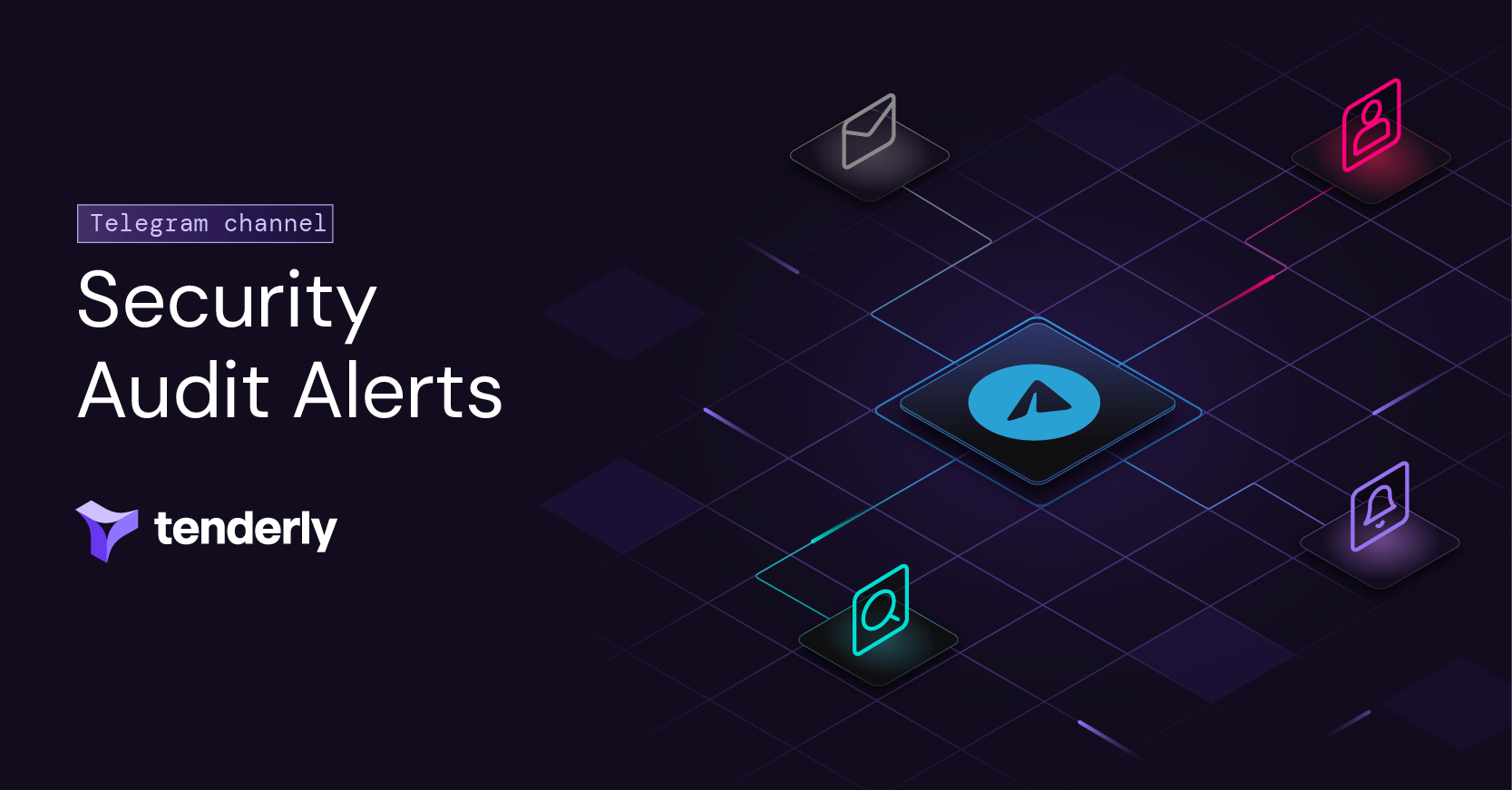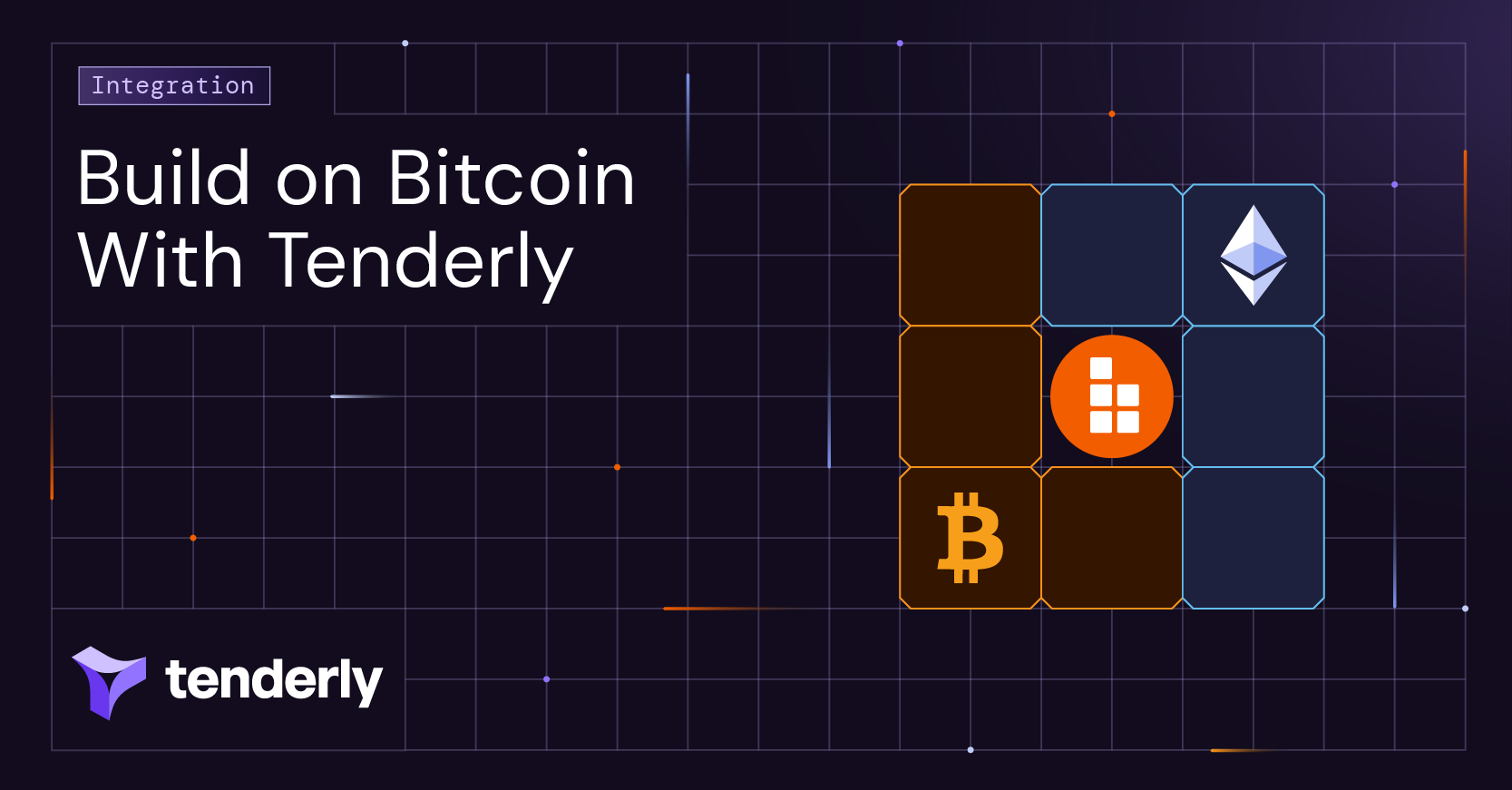The Tenderly team is happy to announce that we completed our integration with Boba Network, an industry-known Layer 2 solution. Tenderly supports Boba Network on four chains: Ethereum, Binance, Moonbeam, and Avalanche. Web3 developers can now use the all-in-one Tenderly platform to build on Boba Network and contribute to the efforts to scale Ethereum.
Boba Network is an optimistic-based multichain Layer 2 scaling solution that aims to unlock the potential of rollup technology and enable more flexible blockchain communication. The protocol is fully compatible with EVM-based tools and has multichain support for Avalanche, BNB, Moonbeam and Fantom. Boba Network is powered by Hybrid Compute technology that brings the power of Web2 on-chain.
Now with Tenderly, Web3 developers have all the development, observability, and infrastructure tools they need to build even smarter on Boba Network. Additionally, this integration helps us further support making Ethereum scalable and onboard new Web3 users to the blockchain.
What to expect when building on Boba Network
The Boba Network is a compute-focused Layer 2 scaling solution. It’s almost identical to Ethereum, enabling Web3 developers to easily build on or bridge to Boba Network. Here are some of the advantages Boba Network offers:
- Hybrid Compute: Boba Network uses Hybrid Compute technology to connect Web3 with Web2. As a Hybrid Compute platform, it enables you to make external Web2 API calls and gather real-world data. You can then leverage off-chain compute and real-world data to deliver enriched experiences to decentralized applications.
Hybrid Compute is a general-purpose pipe between Web3 systems and Web2 computers. It operates on apullbasis, unlike oracle services that usepushcommands. So, ths system provides data only when requested, which significantly reduces gas consumption. Plus, it pulls and retrieves data atomically within the same transaction. - EVM compatibility and scalability: Boba Network is based on the optimistic rollup architecture, which makes it highly scalable. Plus, since it’s EVM-compatible, you can port or build smart contracts with ease.
- Multichain support: Boba Network supports a range of L1 networks, so you can choose networks other than Ethereum as a settlement layer for your dapps. You can choose $BOBA or some other L1-native cryptocurrency to pay for fees on the network.
- High transaction throughput and finality: Since Boba Network uses optimistic rollups, it processes transaction batches on the network and then sends them to the selected L1. In return, this offers high transaction speed and 40-100x lower gas fees than on the respective Layer 1.
Additionally, Boba runs a Sequencer node that orders transactions quickly, bringing fast transaction confirmation times and finality. - An L1-L2 swap system: You can move funds across different chains using Boba’s swap-based system. The swaps are based on liquidity pools that gather small swap fees and distribute them among liquidity providers. There are no delays when bridging funds between chains on Boba Network.
How Tenderly brings security and predictability to Boba Network
As a smart contract developer, you can use Tenderly’s Debugger, Gas Profiler, Transaction Simulator, Forks, Alerting, Web3 Actions, and other functionalities to build, optimize, monitor, and operate reliable smart contracts.
However, aside from improving your development, testing, and monitoring processes, Tenderly allows you to bring security and predictability to other applications on Boba Network.
Develop low gas-consuming smart contracts
Since Boba Network is EVM-compatible, you can deploy smart contracts to the network just as you do on Ethereum. Supported by the already familiar Tenderly tools, you can ensure smart contract correctness before deployment to Boba Network.
On Tenderly, you get a detailed transaction overview so you can analyze executed or simulated transactions.

By using Tenderly’s Debugger and Transaction Simulator, you can catch a bug early on, apply a fix, and then simulate it to ensure it resolves the problem successfully. Plus, Gas Profiler allows you to analyze smart contract gas consumption down to individual functions. So, you can optimize your contract’s code and reduce its gas usage prior to deployment.
Preview withdrawal execution
Boba Network allows you to bridge tokens and data between L1 and L2 using the Standard Token Bridge. The bridge allows you to move and exit assets quickly, with waiting times varying from several hours to a few minutes depending on the transaction number. If you decide to withdraw your funds, you just need to trigger the withdrawal functions.
However, once triggered, you cannot cancel your withdrawals. So, to make sure you entered the right transaction parameters, you can run a simulation using Tenderly’s Transaction Simulator. This way, you can ensure your token withdrawal goes as planned before actually executing it.

Strengthen your monitoring process
To stay up to date with balance or other smart contract changes, you can use Tenderly Alerting. By setting up alerts on Tenderly, you can receive notifications about balance changes on specific addresses, ERC20 token transfers, events emitted in your smart contracts, and other relevant changes on Boba Network.

Plus, you can get updates directly to your email, Slack, or Telegram, set up webhook endpoints, or go with some other channel. This way, you can act as soon as something of interest happens on Boba Network, without having to manually check for network updates.
Automate custom responses to off-chain events
As mentioned, Boba allows you to connect Web2 and Web3 systems using their Hybrid Compute technology. Turing is a Hybrid Compute component that allows your smart contracts to interact with the outside world. To ensure these smart contracts execute properly, you can first use Tenderly simulations to test their communication with a Web2 endpoint.
To take it a step further, you can connect this system with Tenderly Web3 Actions. As a serverless backend, Web3 Actions can execute your custom code in response to pre-defined triggers relevant to your project.

So, by using Hybrid Compute to connect off-chain APIs to Web3 Actions, you can automate your responses to specific events. Once triggered, Tenderly Web3 Actions will execute your custom logic automatically.
Secure governance voting
The Boba DAO handles the governance of the network using $BOBA, its native token. Following a set of governance guidelines, $BOBA token holders can vote on governance proposals and suggest improvements for the network.
When voting on governance proposals, token holders can turn to Tenderly’s simulations. By integrating with Simulation API, Boba governance voters can preview proposal effects before submitting their votes.
Specifically, Tenderly’s Simulation Bundles allow you to run a bundle of simulations using a single request. The API response returns the information on each simulated transaction in the bundle. This way, you can see how a proposal executes, including individual transactions, and cancel your vote in the event of any undesired results.
Scale with Boba Network, build with Tenderly
Tenderly continues to support Web3 developers in their efforts to build innovative products on the blockchain. Our integration with Boba Network allows us to expand the list of networks and, therefore, possibilities for smart contract engineers.
With our all-in-one Web3 development platform, you can build reliable smart contracts on Boba Network, eliminate avoidable risks, and enjoy a frictionless experience along the way. Create a free account with Tenderly and start building smarter on Boba Network.




